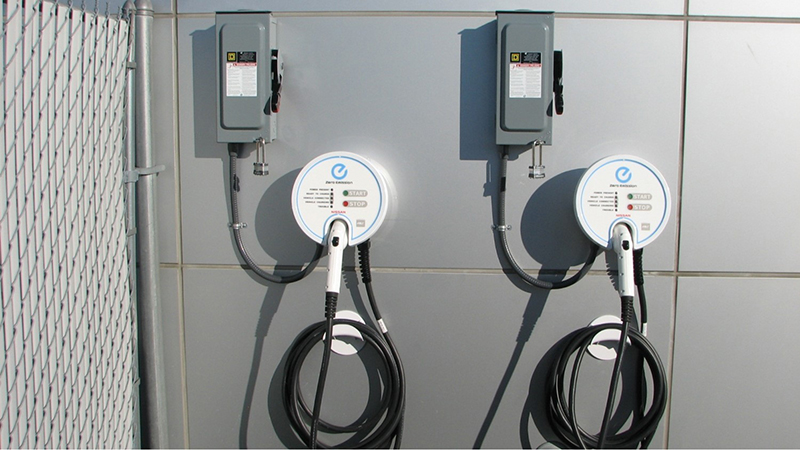What’s involved with setting up an EV charger? - by John Henry

Access to electric vehicle charging is incredibly important to cutting greenhouse gas emissions: the future is electric and the question is how do we get there? As batteries and other related technologies continue to improve, electric vehicles (EVs) are becoming a more enticing choice for passenger vehicles. Today’s EVs have longer range, rapid charging, and improved efficiency. The biggest hurdle? Infrastructure.
Motorized transportation has for the past century been dependent on fossil fuels. In order for cleaner electric vehicles to fully replace existing technology, there is a great deal of infrastructure that has to be put in place. EV charging stations en mass have to replace or exist alongside traditional fuel stations on major motor ways, and in other public places. And at the pace of adoption of EV’s it’s certain that the infrastructure will follow.
EV’s have an advantage over a traditional gas-powered vehicle in that fuel stations aka chargers can be located at unconventional locations (anywhere there is access to electricity) where it’s not feasible to install a gas pump, such as the supermarket, a mall parking lot, or a parking garage. Some require payment “per minute” of charging, whereas others offer free charging as an incentive to visit a store or business. It can indeed be a major draw for your customers, employees, or tenants, so it’s important to decide whether you will want to provide the service for free or require payment for charging. Now, what’s involved with setting up an EV charging station and what are some of the other questions you need to address?
Location: Running a power line to an EV charger is considerably easier than setting up a gasoline reserve tank and installing a gas pump, but there are still some important things to consider. Primarily, you and your electrical contractor will need to consider where the EV charger’s power source is, and where the path running that power will go.
At Interstate, when we’re discussing these installations with clients, we’ll often find out that they want the chargers in the front of the building for visibility, but this is usually one of the most difficult places for installation. The power source is usually on a side of the building or in the back, and running a path to the front of the building could require temporarily uplifting landscaping or require a significant amount of work (and costs) to facilitate. If you’re building new construction, of course it’s easier to plan for and accommodate the proper cabling in the planning stages. Since we’re in New England, you’ll also need to consider snow removal and ensure that the chargers are not in a spot susceptible to damage by plows or other equipment.
Electrical Capacity: Beyond where you will be placing your EV chargers, you (and your electrician) need to determine whether your building and existing electrical infrastructure can support the addition of EV chargers. Of course, with new construction, it’s easy to include EV chargers as part of your infrastructure needs, but retrofitting existing buildings can be harder. Whether it’s tapping into existing electrical lines or pulling new lines from the transformer, your electrician will explore your options with you.
Type of Charger: There are multiple varieties, brands and types of chargers, but your electrician can help you decide which model best suits your needs. Most at-home chargers are “Level 1,” meaning they can connect to a standard 120-volt electrical outlet. The majority of commercial chargers are “Level 2,” which require 240-volt power. There are two plug standards for these “Level 2” chargers, and most commercial charging stations come equipped with both types. If you’re going to require payment to use the charger, you’ll also need to decide whether you want the charger equipped with network connectivity so that it can be listed on publicly available EV charger maps, offer scheduling to drivers, and other features.
Some models are able to be connected to a landline network cable, and others use a type of wireless connection that require placement outside or within range of a signal (and cannot be installed, for example, in an underground garage without additional equipment).
At Interstate, we’ve dedicated resources to train over 100 employees on EV charger installations so that we’re able to scale up easily as demand for electric vehicles increases. If you have any questions on how to get started, don’t hesitate to get in touch!
John Henry is a project manager and Roger Farwell is project managers/estimators at Interstate Electrical Services Corp., Billerica, Mass.
Mount Vernon Co. acquires John Carver Inn & Spa in Plymouth, MA


IREM President’s Message: Fostering community connections during the holiday season

Selecting the right façade installation firm - by Steven Powell


.png)





.png)
